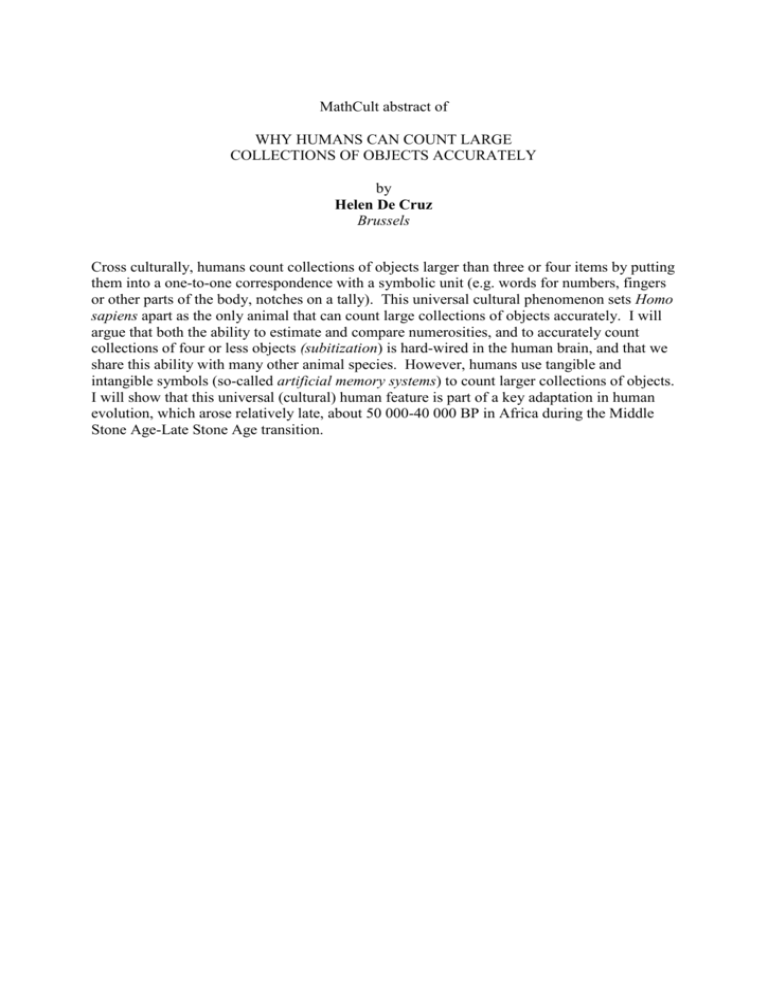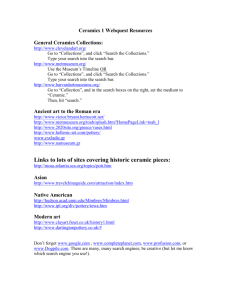Why humans can count large collections of objects accurately
advertisement

MathCult abstract of WHY HUMANS CAN COUNT LARGE COLLECTIONS OF OBJECTS ACCURATELY by Helen De Cruz Brussels Cross culturally, humans count collections of objects larger than three or four items by putting them into a one-to-one correspondence with a symbolic unit (e.g. words for numbers, fingers or other parts of the body, notches on a tally). This universal cultural phenomenon sets Homo sapiens apart as the only animal that can count large collections of objects accurately. I will argue that both the ability to estimate and compare numerosities, and to accurately count collections of four or less objects (subitization) is hard-wired in the human brain, and that we share this ability with many other animal species. However, humans use tangible and intangible symbols (so-called artificial memory systems) to count larger collections of objects. I will show that this universal (cultural) human feature is part of a key adaptation in human evolution, which arose relatively late, about 50 000-40 000 BP in Africa during the Middle Stone Age-Late Stone Age transition.











